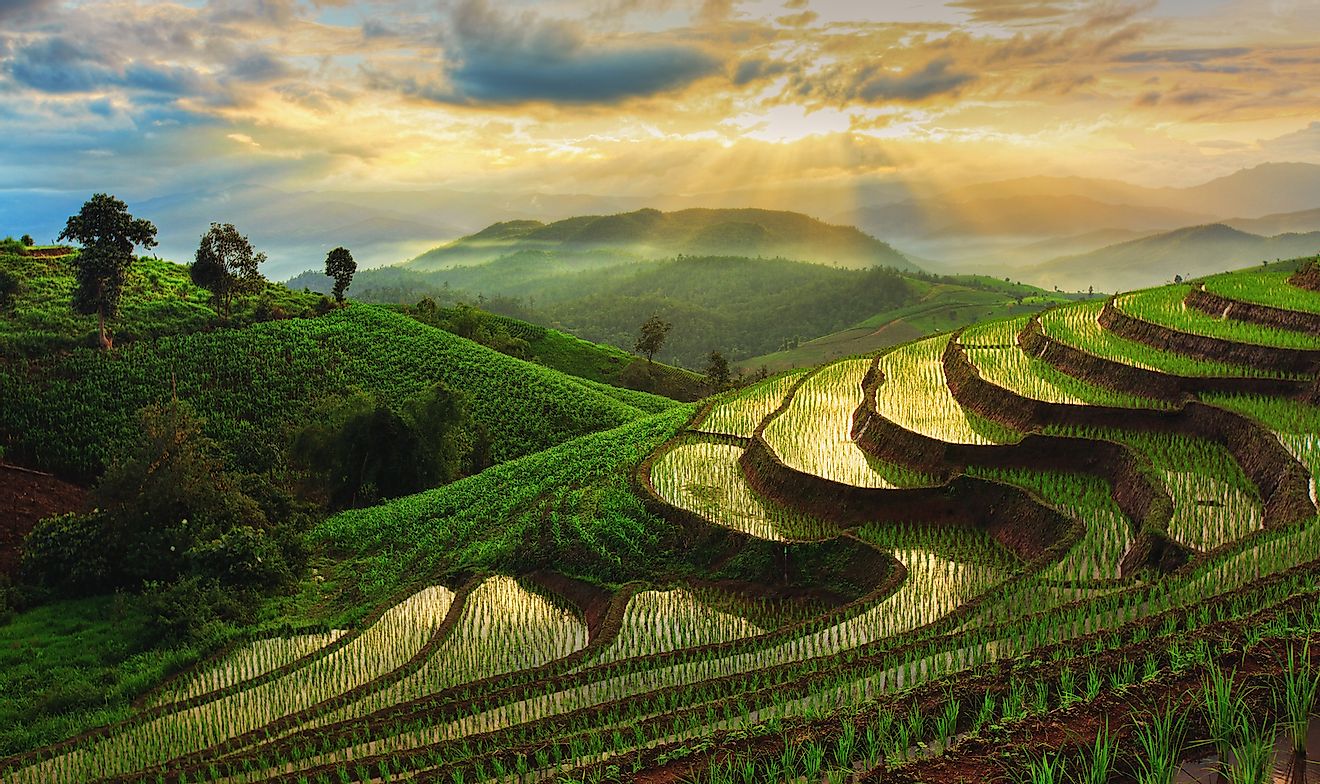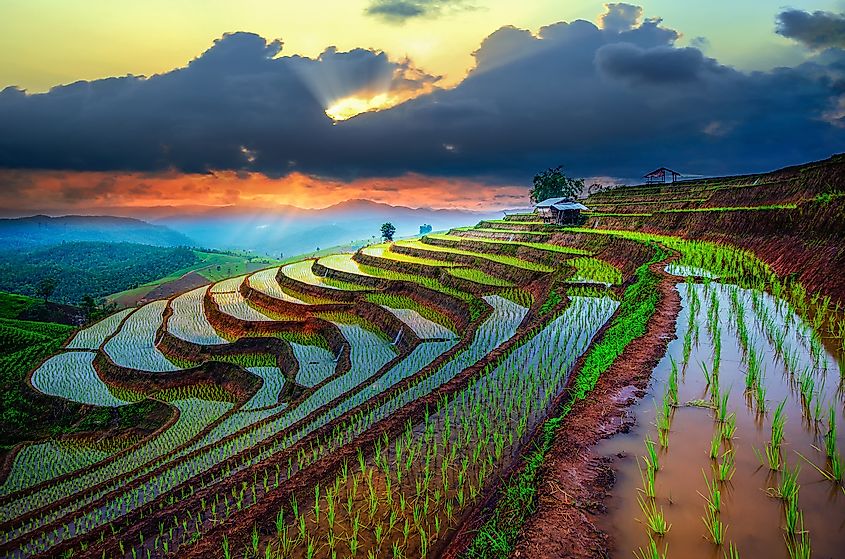
- Terrace farming is a method of farming whereby “steps” known as terraces are built onto the slopes of hills and mountains to be used for crop cultivation.
- Terrace farming is commonly used in Asia by rice-growing countries such as Vietnam, Philippines, and Indonesia.
- Terrace farming prevents the washing away of soil nutrients by the rains. This leads to the growth of healthy crops.
- There are two types of terracing known as graded terracing and level terracing.
How Does Terrace Farming Work?
The Advantages of Terrace Farming

Terrace farming prevents the washing away of soil nutrients by the rains. This leads to the growth of healthy crops. Secondly, it prevents the carrying away of plants by the heavy flowing rivers of water. Sometimes rain water carries away the crops leading to low crop yield. Thirdly, terraces help in reduction of soil erosion and water loss. The fourth benefit of terrace farming is that it has made the idle hillside land become productive. Lastly, terraces trap rainwater allowing the people to engage in cultivation of water-intensive crops such as rice.
Terrace farming is an important agricultural method that has made farming in mountainous parts of the world possible. Its absence would have led to most parts of Asia being unproductive. Hence it needs to be explored in other parts of the world such as Africa, America and other parts of the Asia that are not yet using it. Terrace farming is able to turn the moist idle land into productive farms leading to high food security in the world. It also helps in retaining the soil nutrients in the farms.
Disadvantages of Terrace Farming
Terrace farming can lead to rainwater saturation. This is dangerous since it causes the overflow of water during the rainy season. The consequence of overflowing water is that it causes more dangerous water runoffs. Terraces may also result in mudslides if not well managed. Another limitation of terrace farming is that there’s need for huge inputs of labor to construct and maintain the terraces. Hence it is expensive as it is labor intensive. However, it can be cheap if there’s access to cheap labor. Terrace farming also leads to the reduction in soil quality due to the leaching process.



 Users Today : 13
Users Today : 13 Total views : 666876
Total views : 666876